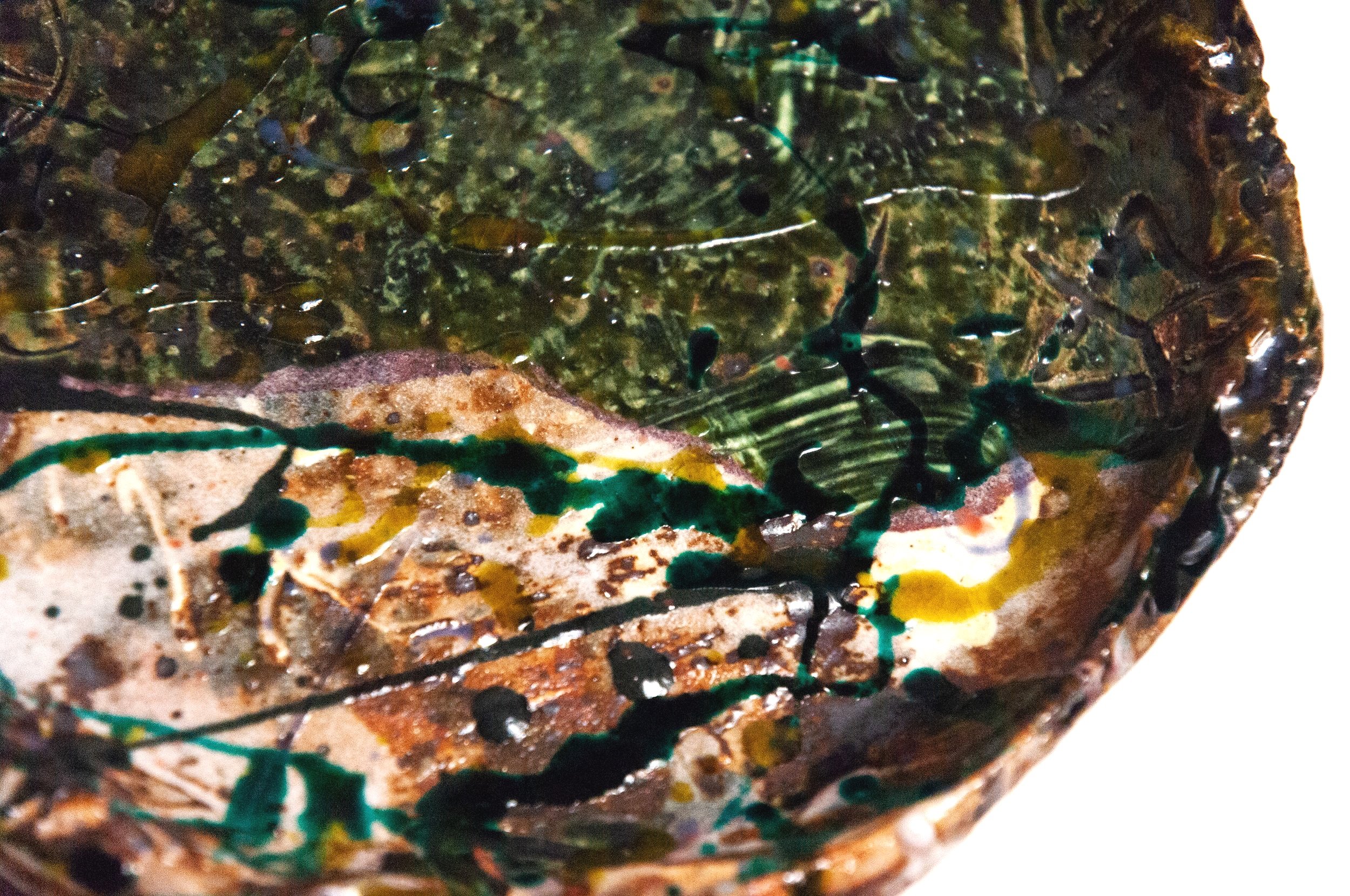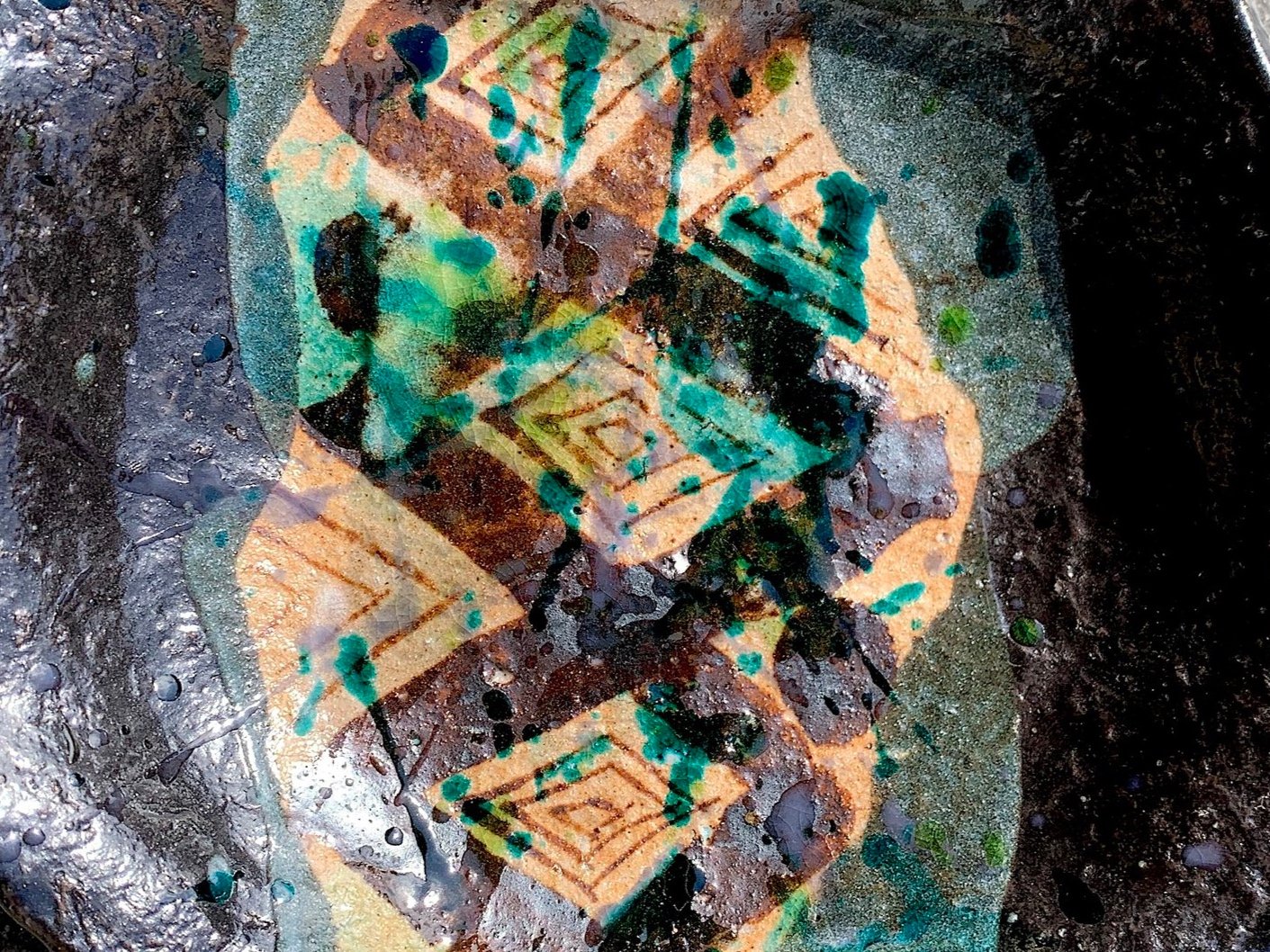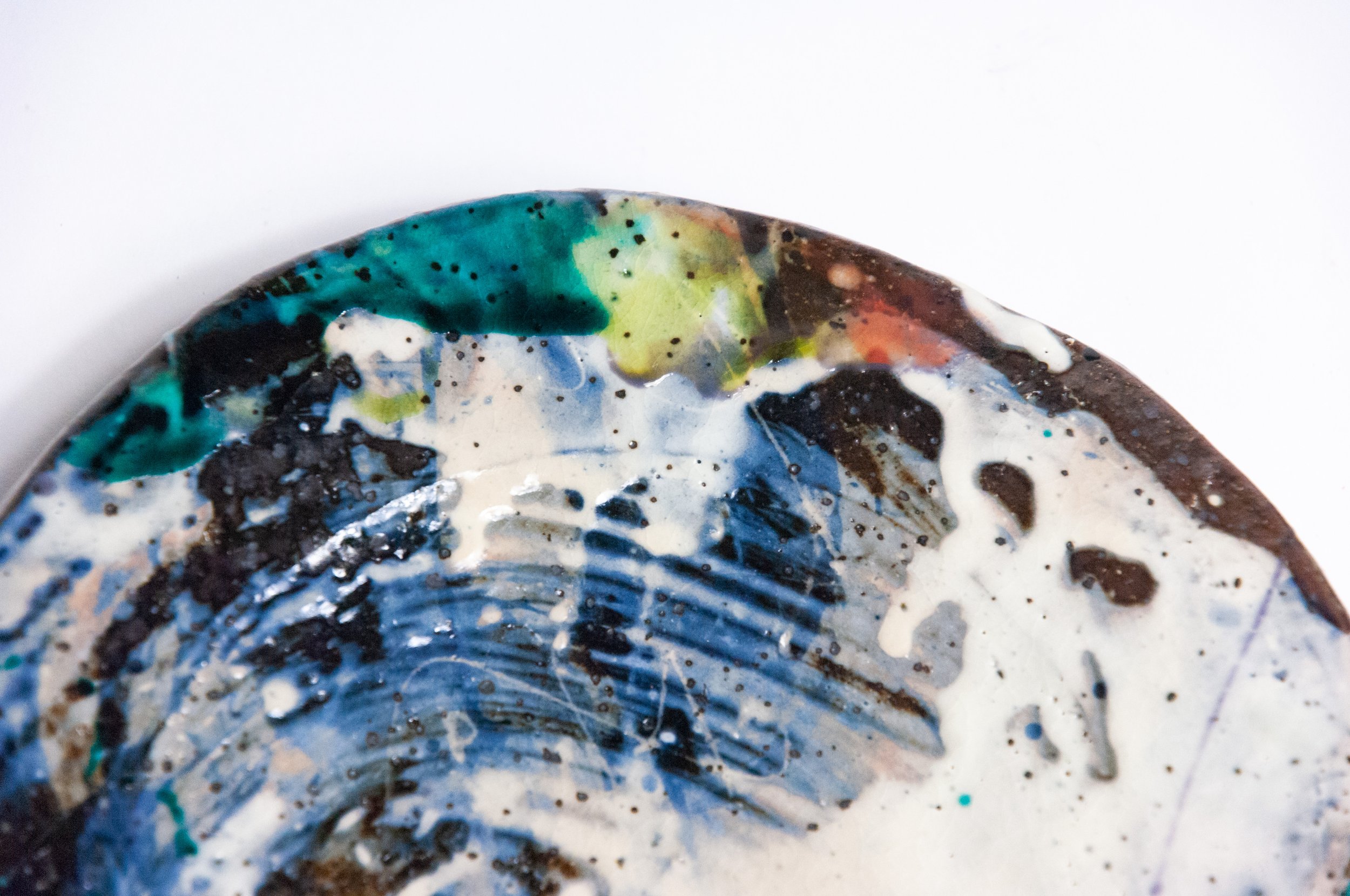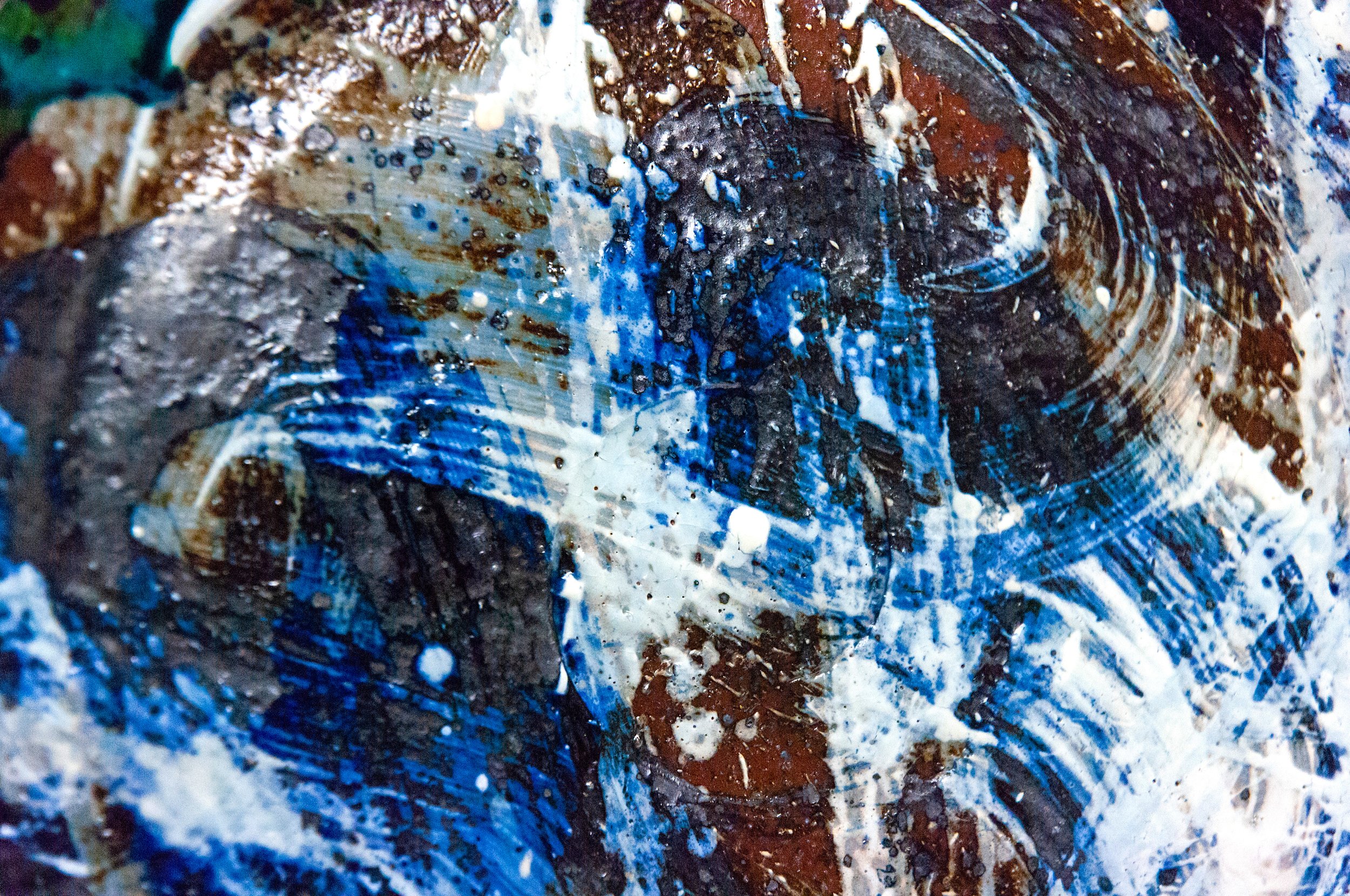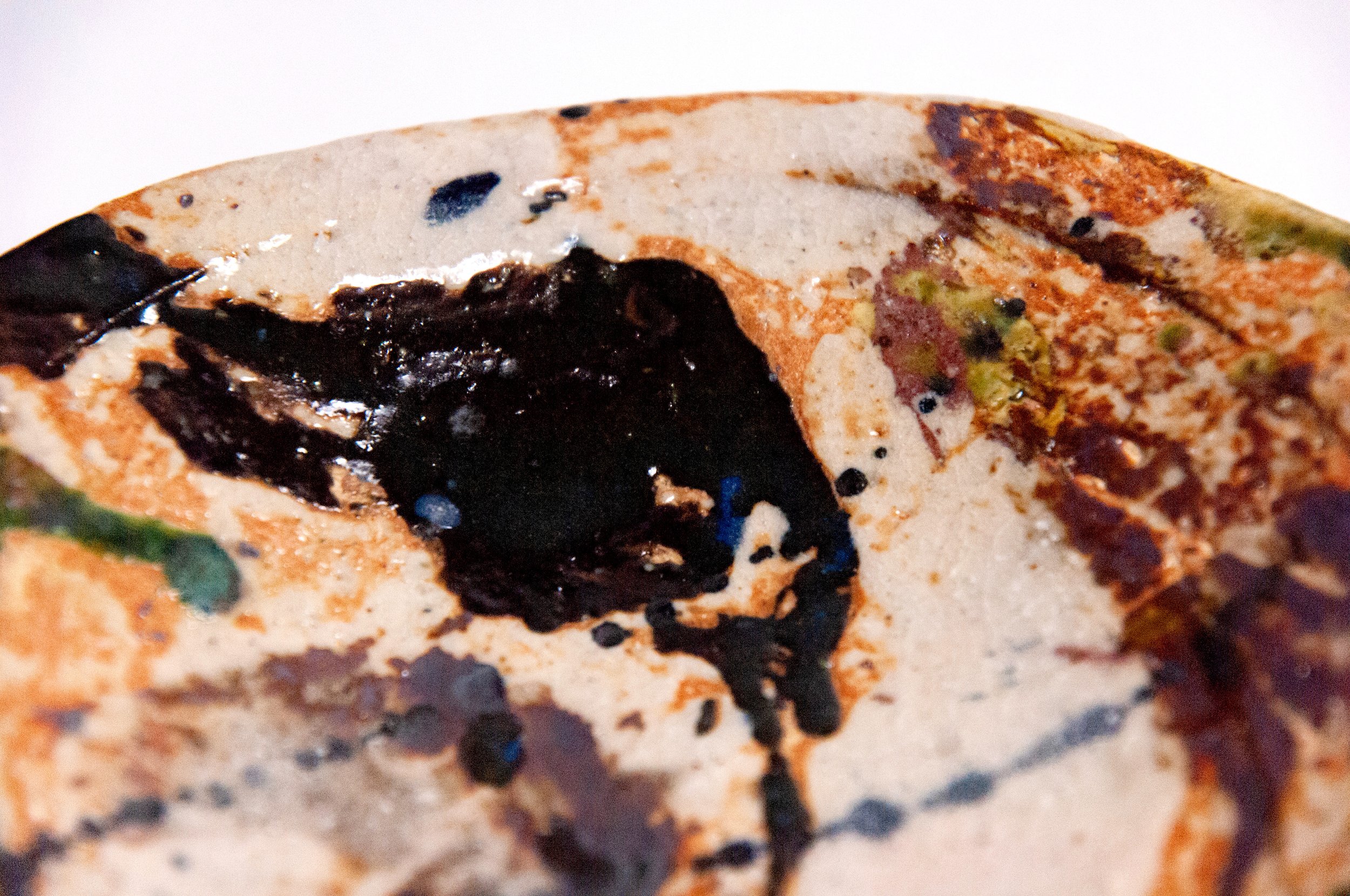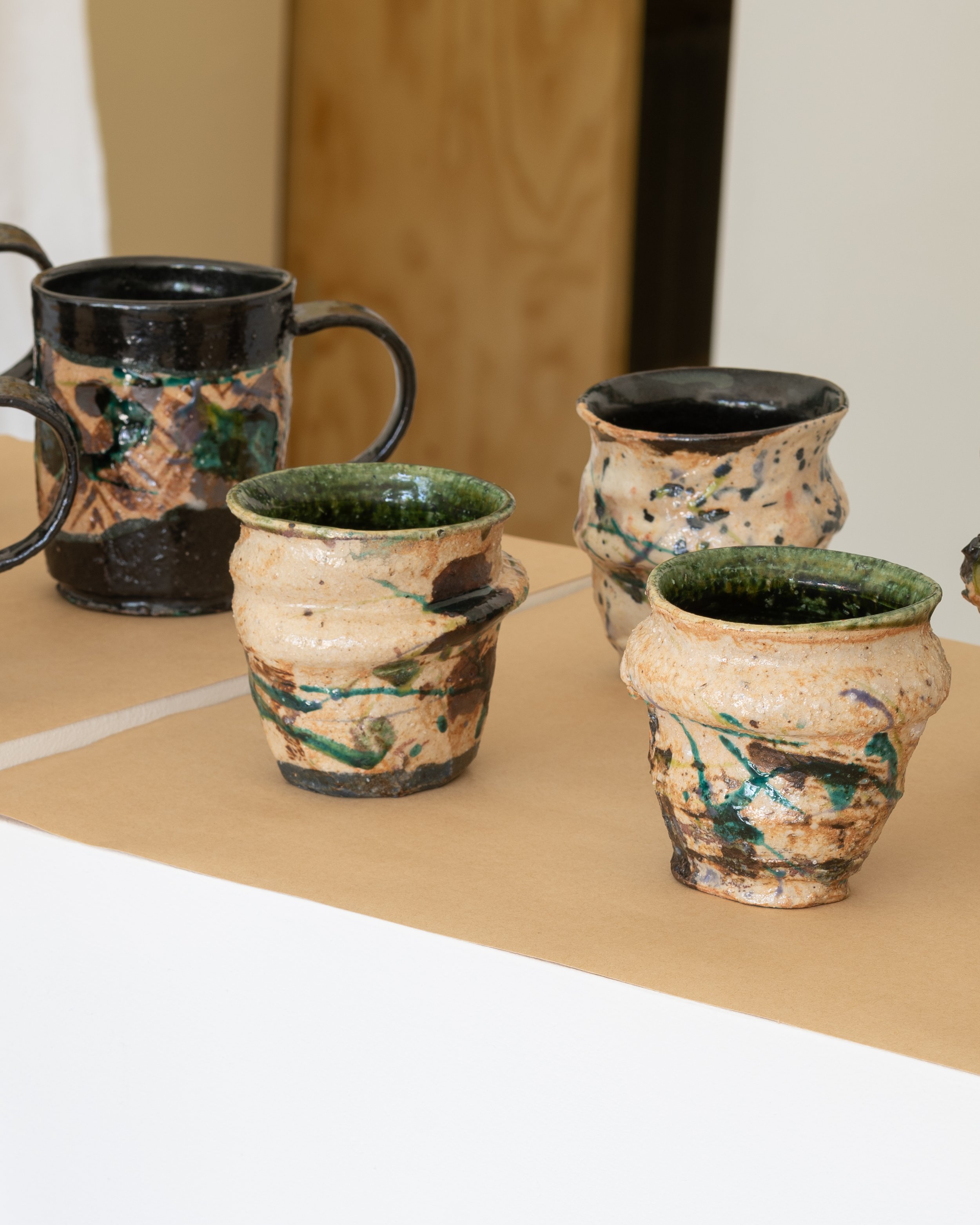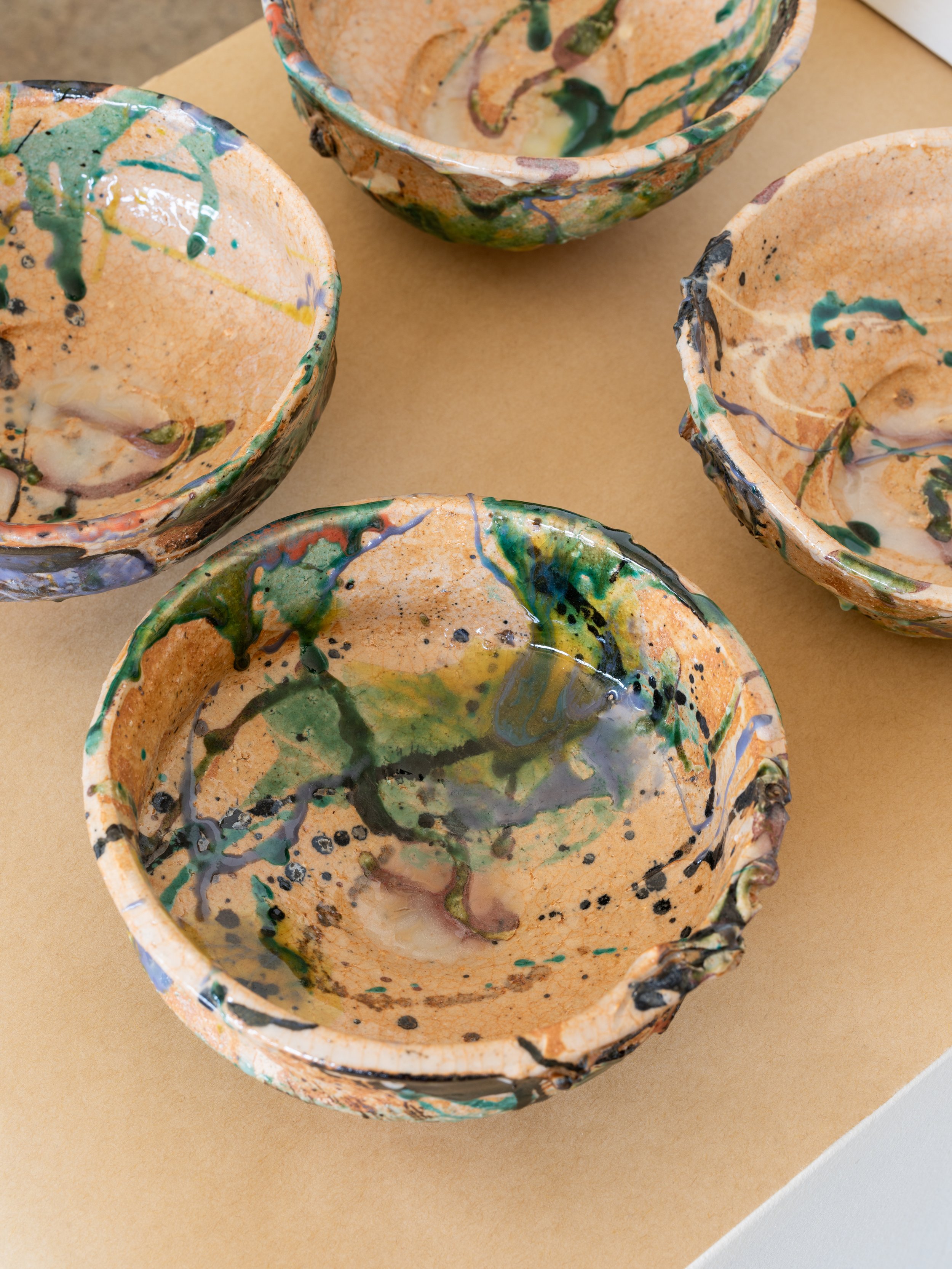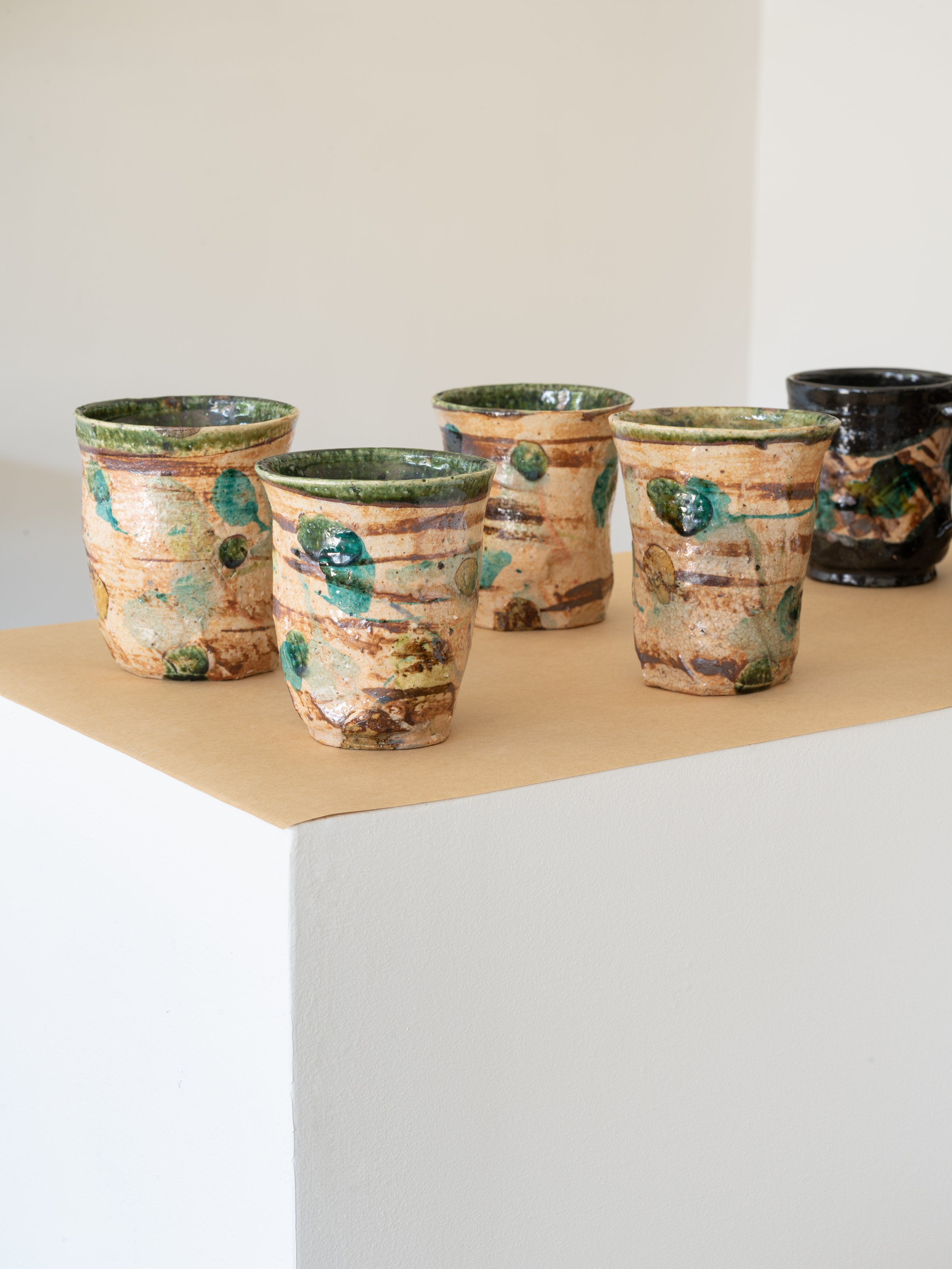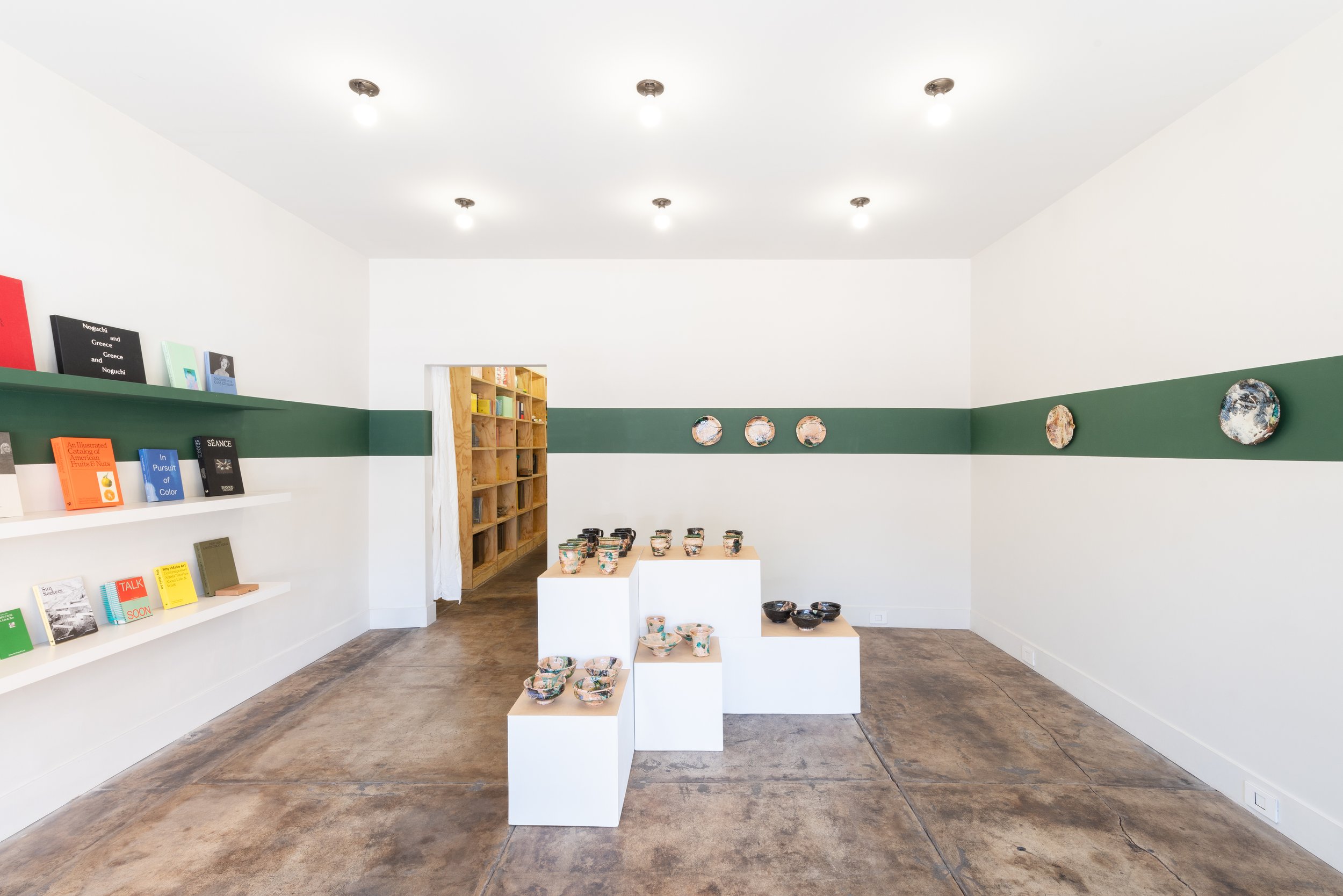HAKEME
刷毛目
15 July - 5 August, 2023
1545 W Sunset, Los Angeles, CA 90026
The framework of Akihide Nakao’s enduring practice helps to circumvent the West’s relationship to objects of utility. By encouraging a new connection to objects for the home—known as “tableware”—Nakao reclaims them as “freeware.” These freewares exist outside of the regulatory rules that traditions often dictate, and so encourage a reciprocal relationship between the object and the individual. They are for use and should be held without restraint.
Photography by Nice Day Photo
AKIHIDE NAKAO
A solo exhibition
The visually rich and gestural works of Akihide Nakao relay the lively energy of an artist who has spent a lifetime making work like a child. Playfully unrestrained, Nakao’s layered approach embraces the history behind the development of Oribe and the innovation that this term has come to represent. The catalogue for the exhibition Turning Point: Oribe and the Arts of Sixteenth-Century Japan at The Met Museum in New York stated that “the term ‘Oribe’ neatly captures the spirit of creative nonconformity—a quality strikingly evident in the taste and deeds of the warlord and tea master Furuta Oribe (1544–1615).” Centuries later, the ethos of Furuta Oribe lives on through the celebration of the Oribe glazes that are now widely characterized as the deep blue, green, and black copper glazes seen on ceramics today.
When asked if he thought of himself as an artist or potter (a common question that many working in clay face), Nakao replied, “I have never thought about whether I am an artist or not. I am not a good potter, I don't make objects, and I don't really know who I am. I am happy that people appreciate what I make for fun.”
Despite having exhibited widely within Japan in two-person and solo exhibitions as well as several group exhibitions such as the Japanese Traditional Crafts Exhibition at the Shimane Art Museum, the China–Japan International Ceramic Art Exhibition, the Asahi Ceramic Art Exhibition at the Meguro Museum of Art, and the Tokai Traditional Crafts Exhibition,Hakeme marks the first solo exhibition of Nakao’s works outside of Japan.
As part of a quarterly presentation
within
Atelier Éditions Showroom

